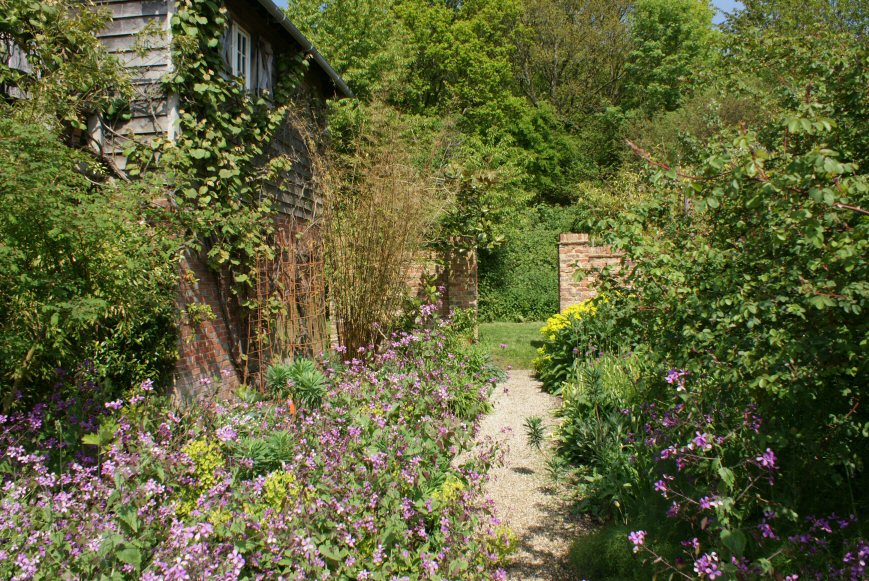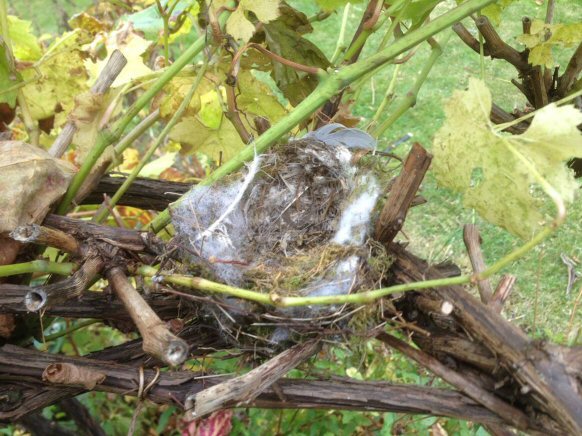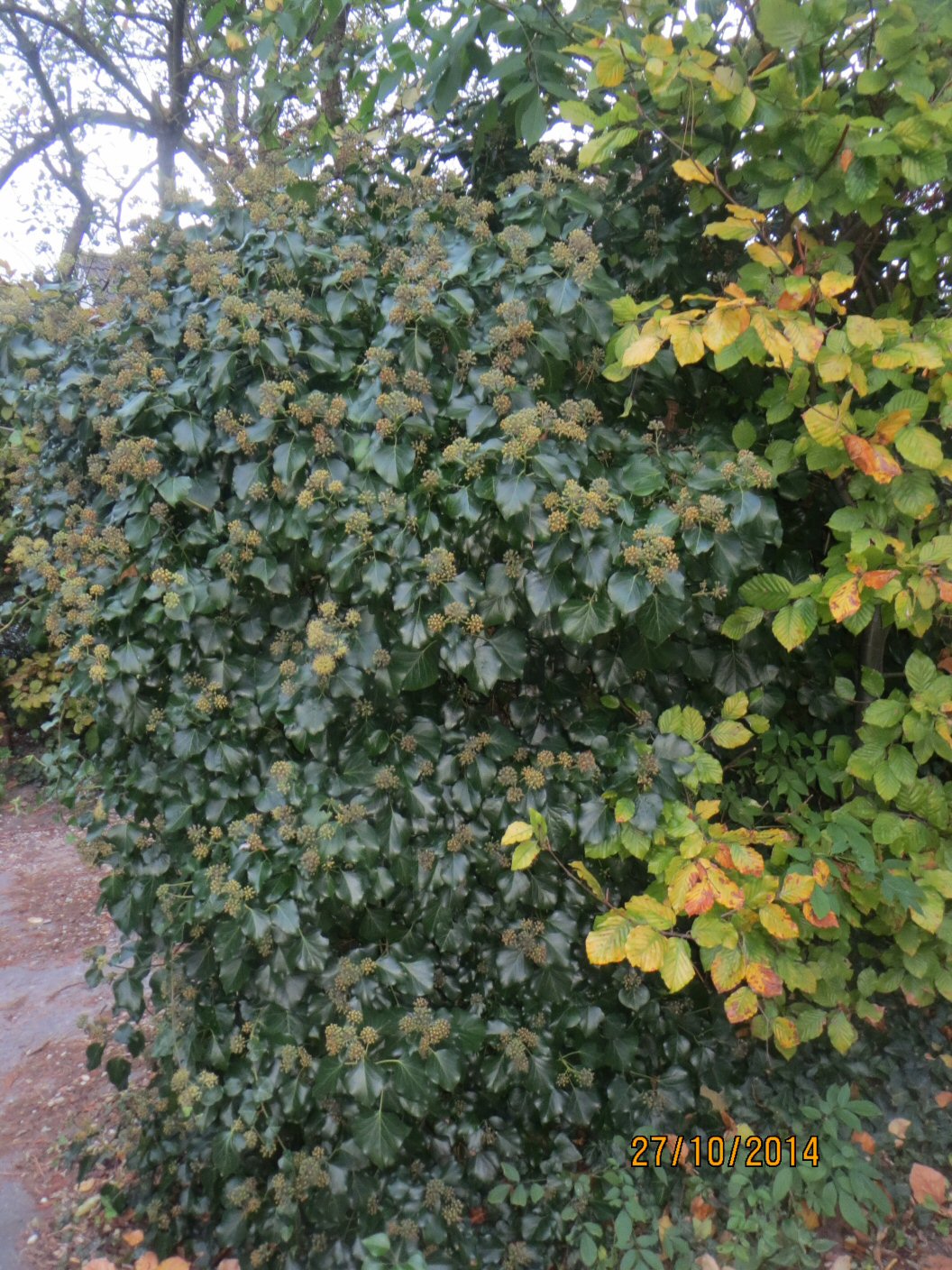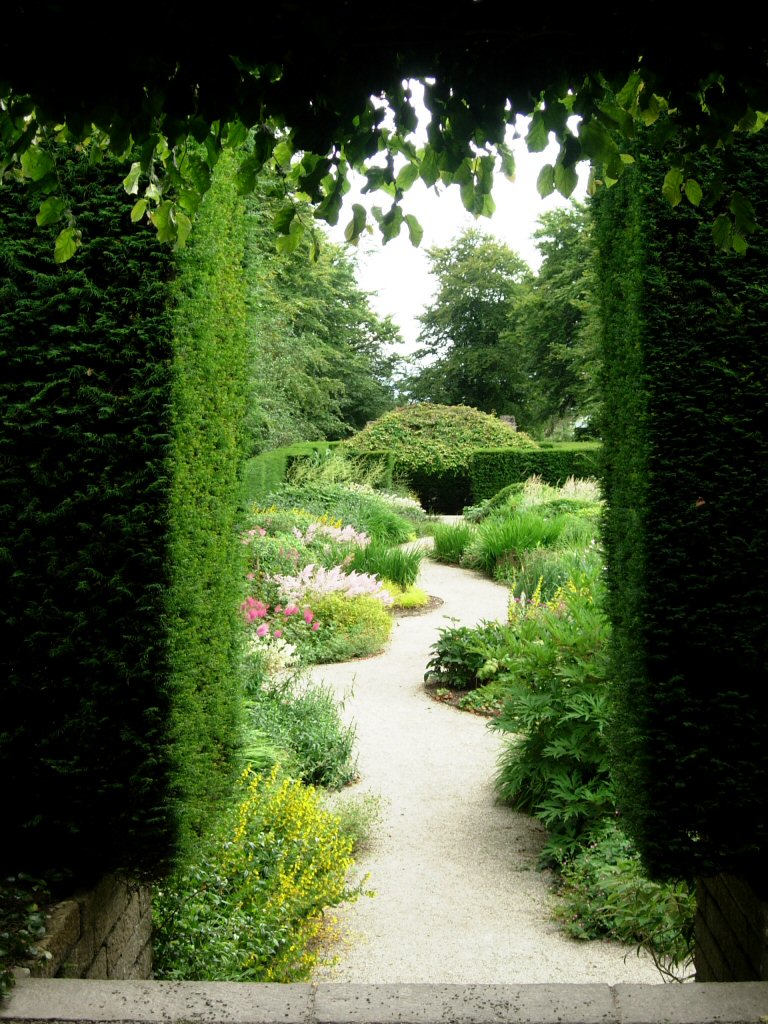- Home
- Practical Advice
- Plants and planting
- Plants for structure
Plants for structure
Gardeners and garden designers like to use the shapes and forms of plants to give structure and texture to their planting, so that it is visually interesting throughout the year. However there is another important aspect to the three dimensional structure of garden plants, which is the help it can provide to wildlife.
When it comes to the value that garden plants can offer for wildlife, most attention is usually focused on plants for pollinators and berry-bearing shrubs for birds. However, plants can also create a complex physical infrastructure that influences much of a garden’s environmental diversity and increases the ability of the garden to support lots of biodiversity. We shouldn’t underestimate the importance of this ‘architecture’ and it guide your choice in gardening for wildlife.
Here are some of the principal ways in which plant structure influences garden diversity. Note that in all of these examples, the question of whether a plant is native or not is probably irrelevant.

Gardens full of structure like Castle Drogo (left) and Perch Hill (above) look beautiful and provide lots of habitat for wildlife.
Microclimates
The complex structures of foliage, flowers and stems creates parts of the garden that are dryer or wetter than each other, or that are more exposed or more sheltered, lighter or darker, warmer or colder. This profoundly influences the range of creatures that live there. You only have to consider the damp, dark world underneath a tree versus the desiccated, wind-tossed crown to recognise the extremes of environment that plants can create.
Frameworks
Many plants offer a framework within which various creatures can build their own structures. The most obvious examples are the nests of various birds, for which the species of tree or bush tends to be much less important than the structural suitability of the branches and twigs to support and safeguard the nest.

This wren's nest was built in the twisted main branches of an ornamental grape vine ("Brandt") growing over a pergola.
Perches
Plants can offer a platform or ‘stage’ from which certain creatures can watch for a mate or defend a territory from rivals. Most garden bird species, for example, use elevated song perches from which to advertise, but prominent perches are also used by territorial butterflies and various hoverflies.
Plants can also provide the vantage points from which to hunt for food, such as the perches robins like to use to survey the ground beneath. Plants can also provide vital structures at certain stages in a species’ lifecycle, such as the vertical stems of marginal pond plants that dragonflies and damselflies need when they emerge as nymphs and transform into adults.
Corridors and highways
Plants can create the physical highways that wildlife uses to travel through and between gardens. It may be the interconnecting network of branches offering an elevated route that a squirrel, for example, uses to avoid having to descend onto the ground. Hedges also provide safe corridors for many wildlife species, either through its branches or in the dark spaces beneath, while long grass offers a much-preferred route for creatures such as voles and Slow-worms rather than having to risk the dangers of crossing short turf.
Plant-based routes can also be vertical as well as horizontal. Bare fences and walls can make it difficult for many wildlife species to move from one garden to another, but climbing plants can help give access in and out. Meanwhile, many birds like to work their way down into gardens step by step using trees and shrubs rather than dropping down into the danger zone in one move.
Cover for safety; cover for attack
Through their structure, plants can offer secure places for creatures trying to avoid detection. Beetles, for example, often hibernate deep within the cover of grass tussocks and ladybirds within hollow plant stems, while spiny and evergreen bushes are ideal roosting sites for many birds. The height off the ground of many plants is also valuable for many creatures seeking to avoid ground predators. However, cover can also be important for predators as places from which to launch their attacks.
Providing structure in the garden
Most of us have small gardens, and so we need to plan carefully what to plant to provide structure, without over-crowding a small space. Remember also that plants grow, so the three trees you put in so tidily now, in ten years’ time will be shading out the rest of the garden and causing complaints from the neighbours. Your garden won’t take many trees, so think of the value they may give for blossom, fruit and berries when making your choice, as well as how fast they grow and to what size.
Shrubs, especially if you include some broad-leaved evergreens, make excellent cover for insects and smaller animals. For smaller gardens, it’s well worth putting in some climbers. These achieve vertical height and structure quickly, and are easily managed. Some, such as Russian vine Fallopia aubertii grow too fast and prolifically for most gardens, but grape vines, Wisteria, Clematis and many others are attractive, provide great habitat, and can be trained to provide privacy and cover unsightly sheds. One of the best structural plants is ivy, and if you allow it to grow up a wall, it creates a dense hidden world where birds like wrens and pigeons will nest, and butterflies choose for overwintering habitat. Ivy flowers when it grows upwards, and is then an excellent late resource for pollinators, and its berries attract birds.
This thick ivy covering an old fence makes superb nesting and over-wintering habitat, and its flowers and berries are important autumn resources for pollinators and birds

Plants for structure
Gardeners and garden designers like to use the shapes and forms of plants to give structure and texture to their planting, so that it is visually interesting throughout the year. However there is another important aspect to the three dimensional structure of garden plants, which is the help it can provide to wildlife.
When it comes to the value that garden plants can offer for wildlife, most attention is usually focused on plants for pollinators and berry-bearing shrubs for birds. However, plants can also create a complex physical infrastructure that influences much of a garden’s environmental diversity and increases the ability of the garden to support lots of biodiversity. We shouldn’t underestimate the importance of this ‘architecture’ and it guide your choice in gardening for wildlife.
Here are some of the principal ways in which plant structure influences garden diversity. Note that in all of these examples, the question of whether a plant is native or not is probably irrelevant.


Gardens full of structure like Castle Drogo (left) and Perch Hill (right) look beautiful and provide lots of habitat for wildlife.
Microclimates
The complex structures of foliage, flowers and stems creates parts of the garden that are dryer or wetter than each other, or that are more exposed or more sheltered, lighter or darker, warmer or colder. This profoundly influences the range of creatures that live there. You only have to consider the damp, dark world underneath a tree versus the desiccated, wind-tossed crown to recognise the extremes of environment that plants can create.
Frameworks
Many plants offer a framework within which various creatures can build their own structures. The most obvious examples are the nests of various birds, for which the species of tree or bush tends to be much less important than the structural suitability of the branches and twigs to support and safeguard the nest.

This wren's nest was built in the twisted main branches of an ornamental grape vine ("Brandt") growing over a pergola.
Perches
Plants can offer a platform or ‘stage’ from which certain creatures can watch for a mate or defend a territory from rivals. Most garden bird species, for example, use elevated song perches from which to advertise, but prominent perches are also used by territorial butterflies and various hoverflies.
Plants can also provide the vantage points from which to hunt for food, such as the perches robins like to use to survey the ground beneath. Plants can also provide vital structures at certain stages in a species’ lifecycle, such as the vertical stems of marginal pond plants that dragonflies and damselflies need when they emerge as nymphs and transform into adults.
Corridors and highways
Plants can create the physical highways that wildlife uses to travel through and between gardens. It may be the interconnecting network of branches offering an elevated route that a squirrel, for example, uses to avoid having to descend onto the ground. Hedges also provide safe corridors for many wildlife species, either through its branches or in the dark spaces beneath, while long grass offers a much-preferred route for creatures such as voles and Slow-worms rather than having to risk the dangers of crossing short turf.
Plant-based routes can also be vertical as well as horizontal. Bare fences and walls can make it difficult for many wildlife species to move from one garden to another, but climbing plants can help give access in and out. Meanwhile, many birds like to work their way down into gardens step by step using trees and shrubs rather than dropping down into the danger zone in one move.
Cover for safety; cover for attack
Through their structure, plants can offer secure places for creatures trying to avoid detection. Beetles, for example, often hibernate deep within the cover of grass tussocks and ladybirds within hollow plant stems, while spiny and evergreen bushes are ideal roosting sites for many birds. The height off the ground of many plants is also valuable for many creatures seeking to avoid ground predators. However, cover can also be important for predators as places from which to launch their attacks.
Providing structure in the garden
Most of us have small gardens, and so we need to plan carefully what to plant to provide structure, without over-crowding a small space. Remember also that plants grow, so the three trees you put in so tidily now, in ten years’ time will be shading out the rest of the garden and causing complaints from the neighbours. Your garden won’t take many trees, so think of the value they may give for blossom, fruit and berries when making your choice, as well as how fast they grow and to what size.
Shrubs, especially if you include some broad-leaved evergreens, make excellent cover for insects and smaller animals. For smaller gardens, it’s well worth putting in some climbers. These achieve vertical height and structure quickly, and are easily managed. Some, such as Russian vine Fallopia aubertii grow too fast and prolifically for most gardens, but grape vines, Wisteria, Clematis and many others are attractive, provide great habitat, and can be trained to provide privacy and cover unsightly sheds. One of the best structural plants is ivy, and if you allow it to grow up a wall, it creates a dense hidden world where birds like wrens and pigeons will nest, and butterflies choose for overwintering habitat. Ivy flowers when it grows upwards, and is then an excellent late resource for pollinators, and its berries attract birds.

This thick ivy covering an old fence makes superb nesting and over-wintering habitat, and its flowers and berries are important autumn resources for pollinators and birds
See our "How to" guides:
How to: Grow trees and shrubs
Page written by Adrian Thomas Reviewed by Steve Head


|
|
|
|
|
| Introduction to Garden Science | ||
| Garden Ecology | ||
| Garden Biodiversity | ||
| History of gardens and wildlife | ||
| Finding out more | ||
| Wildlife Gardening Myths |
| Introduction to Garden Ecology | ||
| Gardens as a resource | ||
| Physical environment | ||
| Foodwebs and feeding roles | ||
| Climate change | ||
| Sheffield BUGS project | ||
| Plants for Bugs Project | ||
| Research needs | ||
| Garden surveys | ||
| Garden soils |
| Introduction to Garden Biodiversity | ||
| How many species in gardens? | ||
| Native and non-native issues | ||
| Gardens and conservation |
| Introduction to Finding out more | ||
| Natural England booklets | ||
| Books and websites | ||
| Specialist societies | ||
| Scientific literature | ||
| Facebook groups |
| Introduction | ||
| "How to" guides | ||
| Garden Habitats | ||
| Plants and planting | ||
| Garden management |
| Introduction | ||
| Adapt your garden | ||
| Help wildlife groups | ||
| Work with plants | ||
| Make habitats | ||
| Garden sustainability | ||
| Garden with others | ||
| Tips for yourself |
| Introduction to garden habitats | ||
| Water habitats | ||
| Hugelkultur |
| Water and pond ecology | ||
| Ponds and conservation | ||
| Creating garden ponds | ||
| Planting-up ponds | ||
| Managing ponds |
| Planting: basic principles | ||
| Native or non-native? | ||
| Planting for structure | ||
| Planting for pollinators | ||
| Planting for herbivores | ||
| Plants to avoid | ||
| Companion planting |
| Introduction | ||
| Garden design | ||
| Compost and fertility | ||
| Managing pests and diseases | ||
| Gardening without peat | ||
| Garden products | ||
| Tidiness and wildlife |
| Introduction | ||
| Gardens and people | ||
| Urban gardens | ||
| Garden businesses |
| Introduction | ||
| Attitude Survey 2020 | ||
| Wildlife gardens and Education |
| Introduction | ||
| Education resources | ||
| Education evidence | ||
| Case studies | ||
| School grounds | ||
| Forest School |
| Introduction |
| Introduction | ||
| Business grounds |
| Saïd School | ||
| Cemex factory |
See our "How to" guides:
How to: Grow trees and shrubs
Page written by Adrian Thomas Reviewed by Steve Head










